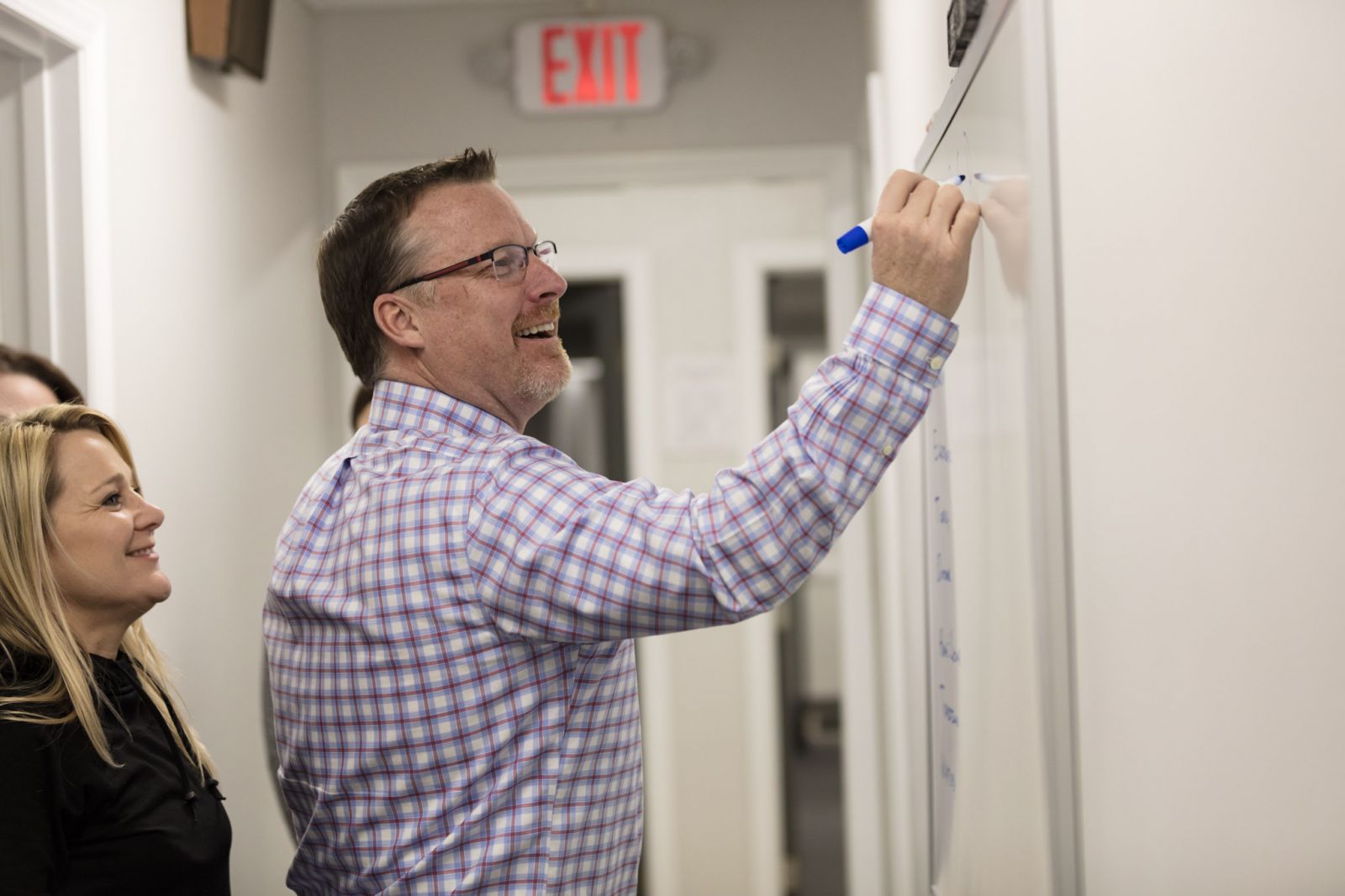80-Year-Old Recognition Company Sees Momentum for Engagement
The C.A. Short Company (CAshort.com) may be best known as a recognition firm, but it has recently made significant investments in developing a world-class engagement practice. The company has created a Program Design team and undertaken initiatives in technology and marketing to position itself in the vanguard of traditional recognition companies now focusing on helping organizations achieve broader organizational goals.
What many don’t know about C.A. Short is that the company has a long tradition of innovation. In the 1980s, it was a pioneer in content marketing, publishing an ongoing series of booklets on how to design effective recognition and incentive programs that addressed an array of success factors, not just rewards. In 2005, it became one of the few companies in the industry that is ISO 9001 certified for quality management.
.jpg) We recently interviewed C.A. Short President Jeff Ross for his perspective on the current marketplace and what changes he sees ahead.
We recently interviewed C.A. Short President Jeff Ross for his perspective on the current marketplace and what changes he sees ahead.
Q: You’re one of the oldest companies in the recognition business. How would you say it has changed in recent years?
A: We have certainly seen a shift from people being recognized purely for longevity to people wanting to be recognized for productivity and the values that are important to organizations. In the past, people were just recognized when the organization decided to recognize people. Now there’s certainly a shift to where recognition is an important part of an organization’s culture. We’ve also seen a shift from recognition being more formal and only happening once a year to a higher demand for recognition being more informal and day-to-day. In the area of technology, we’ve certainly seen the market change at a rapid pace. We like to say that C.A. Short Company is an 80-year-old profitable startup company. We know that what we look like today will not be what we look like tomorrow, as it’s important to stay on top of the technological demands the market requires.
 Q: Your new website talks a lot about engagement. What would you say is the relationship and/or difference between recognition and engagement?
Q: Your new website talks a lot about engagement. What would you say is the relationship and/or difference between recognition and engagement?
A: I believe there’s certainly a difference between recognition and engagement. Recognition is about the needs and the wants of an employee to feel like they’re valued by the organization. From the organization’s viewpoint, recognition is more of an expense and not necessarily tied to any return on investment. Engagement is much bigger than recognition. Engagement is when employees feel passionate about what they do, and when they put discretionary effort into their work. From the organization’s viewpoint, engagement focuses on specific results that are important to the organization, with an emphasis on getting a return on the money invested in the engagement and recognition of the workforce. Recognition is certainly an important driver of engagement, and I certainly believe that a strong recognition program is a pillar for a successful results-driven engagement program.
Q: Where do you think the field of engagement is in its maturity level?
A: I feel that engagement is still in its infancy, but it’s gaining momentum quickly, especially when it comes to employee engagement. It has certainly been a popular term the past few years, but I feel that more and more people are starting to realize the value of an engaged workforce. I still feel that some people are confused about the difference between recognition and engagement, and that over time more and more people are realizing that engagement is much more powerful than just recognition. As the C-level becomes more educated and they see the value and importance of the financial impact of the human capital side of the business, the field will continue to gain momentum and progress.
A: I feel that engagement is still in its infancy, but it’s gaining momentum quickly, especially when it comes to employee engagement. It has certainly been a popular term the past few years, but I feel that more and more people are starting to realize the value of an engaged workforce. I still feel that some people are confused about the difference between recognition and engagement, and that over time more and more people are realizing that engagement is much more powerful than just recognition. As the C-level becomes more educated and they see the value and importance of the financial impact of the human capital side of the business, the field will continue to gain momentum and progress.
 Q: From the point of view of a recognition company president who is also a CPA (Certified Public Accountant), to what extent do you believe financial management is waking up to the economics of engagement? Do you believe that the $15.6 trillion in investment money now calling for disclosure of investments in people and engagement strategies will have an impact, over time, on public company behavior?
Q: From the point of view of a recognition company president who is also a CPA (Certified Public Accountant), to what extent do you believe financial management is waking up to the economics of engagement? Do you believe that the $15.6 trillion in investment money now calling for disclosure of investments in people and engagement strategies will have an impact, over time, on public company behavior?
A: I think the economics of engagement and the financial impact that engagement can have on an organization is what is most exciting about the emergence of engagement and what will make it even more important moving forward. The studies and the economic impact cannot be ignored. I feel that those companies that ignore the financial impact of engagement will be at a competitive disadvantage moving forward. I certainly believe that investment money recognizing the positive financial impact that engagement has on companies will have a positive impact on company behavior, not just in the public sector but the private sector as well.
Q: What is the difference between an engagement company and a recognition company? What are the product and service differentiators between the two?
A: I think the biggest difference between an engagement company and a recognition company would be the array of solutions that each company offers. The traditional recognition company certainly would focus on the awards and recognition aspect of the solution. It would not be as invested in the total culture shift, as well as in the return on the investment that an engagement company would focus on. The engagement company is much more involved in providing data and analytics and addressing the true performance drivers of the business. Again, recognition is a pillar of a successful engagement program, but the engagement company would offer the recognition products and services in addition to offering additional professional services pertaining to assessments, training, thought leadership, analytics, communication and education.
Q: What do you see as the biggest industry opportunities and challenges ahead? Where do you expect C.A. Short to focus?
A: I see the biggest industry opportunity being the education and communication of the value of an engaged workforce. Numbers don’t lie. The value and the effect that an engaged workforce can have, not only on its employees but on the organization itself, its customers, its vendors and even the communities where these organizations are, is astounding and the numbers are real. The opportunity that this industry can provide is limitless. The biggest challenge facing the industry is getting this information out there and getting the buy-in from the executive level. It is really about changing the mindset of the economic value that human capital has in an organization. It’s not just a feeling anymore; the studies and the data show the strong positive financial impact that human capital has on the bottom line. C.A. Short Company’s focus will be on thought leadership, analytics and how we can continue and expand our strong business solutions that make a strong business case as to the value we provide our clients. We will focus on the return on the investment that we can provide our clients and the value added that we can provide as a true business solution partner.
 Q: What other services, if any, do you believe a modern engagement program must provide in terms of other types of engagement solutions – i.e., analytics, assessment, learning, communications, innovation programs, etc.?
Q: What other services, if any, do you believe a modern engagement program must provide in terms of other types of engagement solutions – i.e., analytics, assessment, learning, communications, innovation programs, etc.?
A: I certainly believe that as the marketplace adopts an enterprise engagement approach it will require companies that provide solutions to be able to provide more services to their clients in order for engagement programs to be successful. I believe that the marketplace will demand surveys, assessments, training, coaching, marketing, communications, recognition, continuous improvement, innovative ideas and analytics, as well as best practices in program design and engagement strategy consultation.
Q: If you think these are necessary, what’s your view on how a company like yours can add these services to your lineup?
A: I think that those companies that only offer one or two of the solutions will have to expand their offerings to meet the marketplace demands. I believe that companies will have to evolve to provide these solutions either by developing them in-house, by developing channel partners in the areas that these companies need assistance, or by acquiring those companies that will provide the solutions currently missing from their portfolios.
Q: Why did you join the ISO Technical Advisory Group on human resources?
A: C.A. Short Company has been ISO 9001 Certified since 2005. This business discipline is already ingrained into our business practices. When the opportunity arose to be part of the charge to show the true value of human capital and its value to an organization, I thought it was a great opportunity to be involved and help make a positive to change to just not business but all the people connected to these benefits. I view it as a definitive win-win situation, where I can be involved in a positive movement that has a positive effect on all those involved.
For More Information:
Jeff Ross, President
C.A. Short Company
800.535.5690, ext. 259














